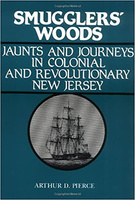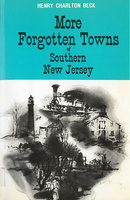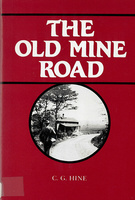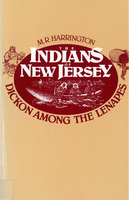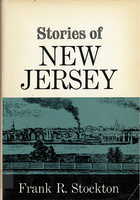Showing 2,661-2,666 of 2,666 items.
Smuggler's Woods
Jaunts and Journeys in Colonial and Revolutionary New Jersey
Rutgers University Press
Arthur Pierce tells the vivid story of smugglers turned privateers after the Revolutionary War broke out. He recounts from many sources tales of ships and men who fought and, although outnumbered and outgunned, still played havoc with British shipping. He tells also of the profiteering that went hand in hand with the privateering of the war years. From the Mullica River to Cape May stretched the woodlands and the inlets that harbored smugglers. Stealthy and dangerous though their activities were, the smugglers were not outcasts. They were looked upon with indulgence by many respectable citizens of the day.
More Forgotten Towns of Southern New Jersey
By Henry Beck
Rutgers University Press
In this sequel to Forgotten Towns of Southern New Jersey, the author visits to the state's early heritage--churches, villages, and roads--are continued. He explores the routes of old railroads and the tangled wilderness of the Forked River Mountains, and he tells the lost stories of forgotten glass and iron and shipbuilding villages.
The Old Mine Road
By C. G. Hine; Introduction by Henry Beck
Rutgers University Press
The Old Mine Road, considered the first road in America designed for wheeled vehicles, was built three hundred years ago by Dutch settlers for access to the mines of the Minisink country. It began in Kingston, New York, wove through Sussex and Warren counties in New Jersey, and ended near the Delaware Water Gap. Many changes have taken place in these regions since C. G. Hine recorded his observations and printed The Old Mine Road for his friends in 1908. This new printing is a facsimile of the first 1908 edition.
The Indians of New Jersey
Dickon Among the Lenapes
Rutgers University Press
Here is a story of the Lenape Indians who lived in what is now New Jersey and eastern Pennsylvania. It describes their culture, crafts, and language as no other book has done. Hunters, fishers, artisans of flint and skins and basketry, tellers of traditional tales, dwellers in a region of hills and barrens, of rivers and forests, they had developed a way of life adjusted to the world around them.
In presenting the lore and heritage of the Lenapes, Dr. M.R. Harrington does so through the eyes of a shipwrecked English boy who became a captive of the Indians, and was eventually adopted into the tribe. The narrative is lively reading, and the facts on which it is based are accurate. With the accompanying Clarence Ellsworth line drawings, the reader can understand and even reproduce many of the objects the author describes: the Lenape bows and arrows, muccasins and mats, baskets and bowls.
This new edition is a reissue of an often asked for an unavailable New Jersey classic, first published in 1938.
In presenting the lore and heritage of the Lenapes, Dr. M.R. Harrington does so through the eyes of a shipwrecked English boy who became a captive of the Indians, and was eventually adopted into the tribe. The narrative is lively reading, and the facts on which it is based are accurate. With the accompanying Clarence Ellsworth line drawings, the reader can understand and even reproduce many of the objects the author describes: the Lenape bows and arrows, muccasins and mats, baskets and bowls.
This new edition is a reissue of an often asked for an unavailable New Jersey classic, first published in 1938.
The Slavs in European History and Civilization
Rutgers University Press
This dense brick of a book starts with a warning to the unwary--an (untranslated) Latin dedication. It was written by a Czech priest who eventually became a Harvard professor of Byzantine history. He informs readers that this book enlarges upon a Harvard course on Slavic history from the 13th to the 17th centuries.
Stay Informed
Subscribe nowRecent News

